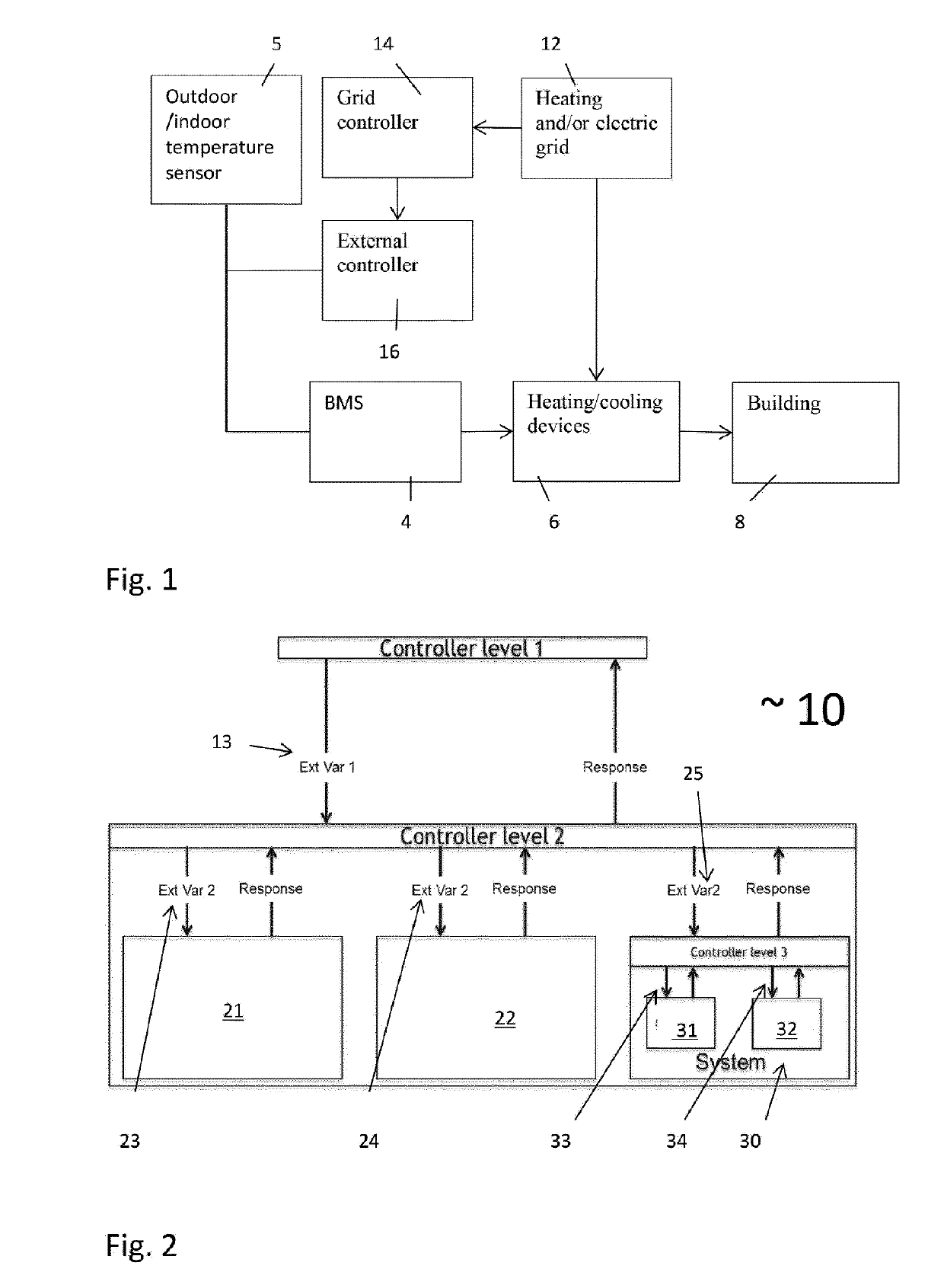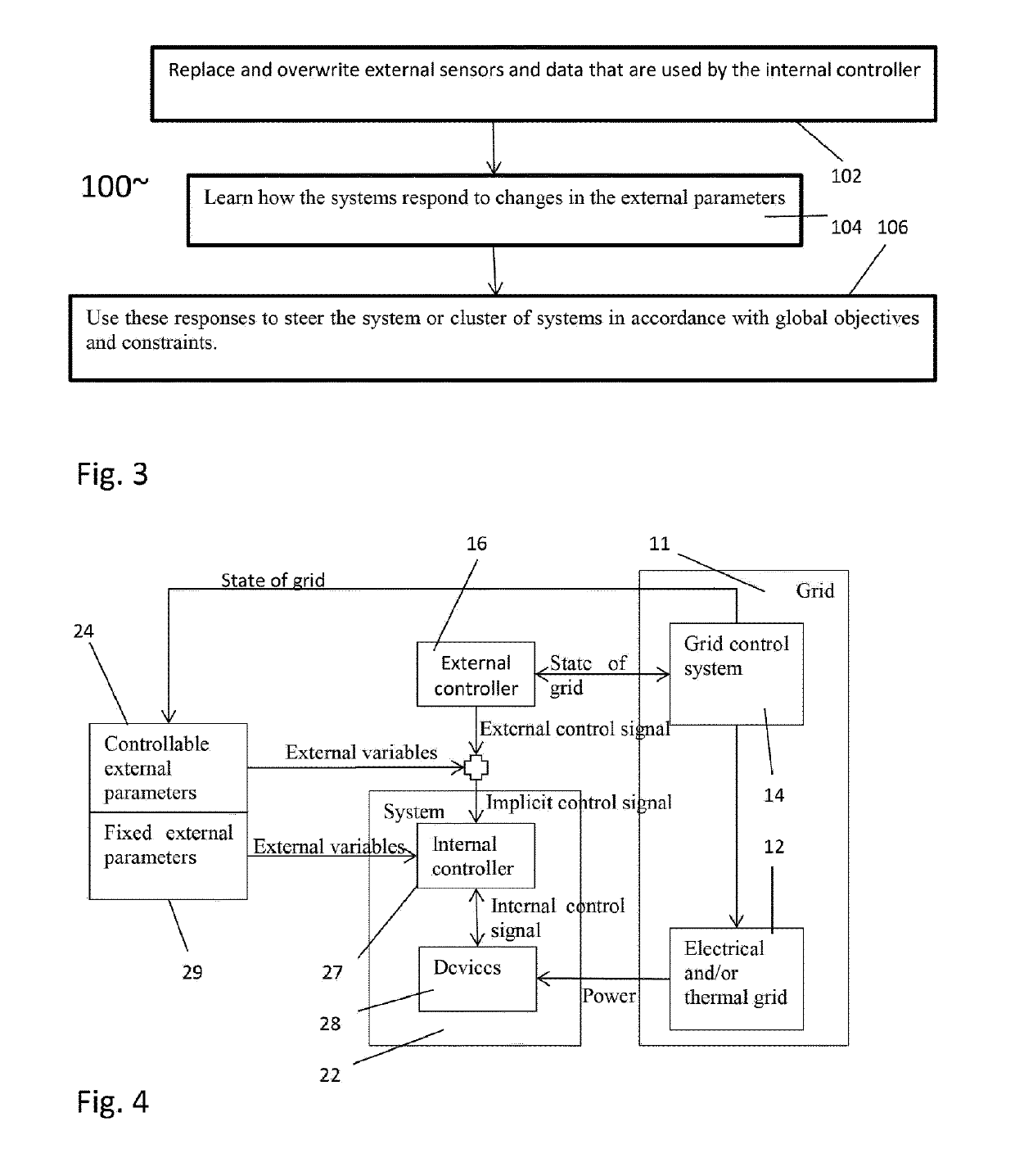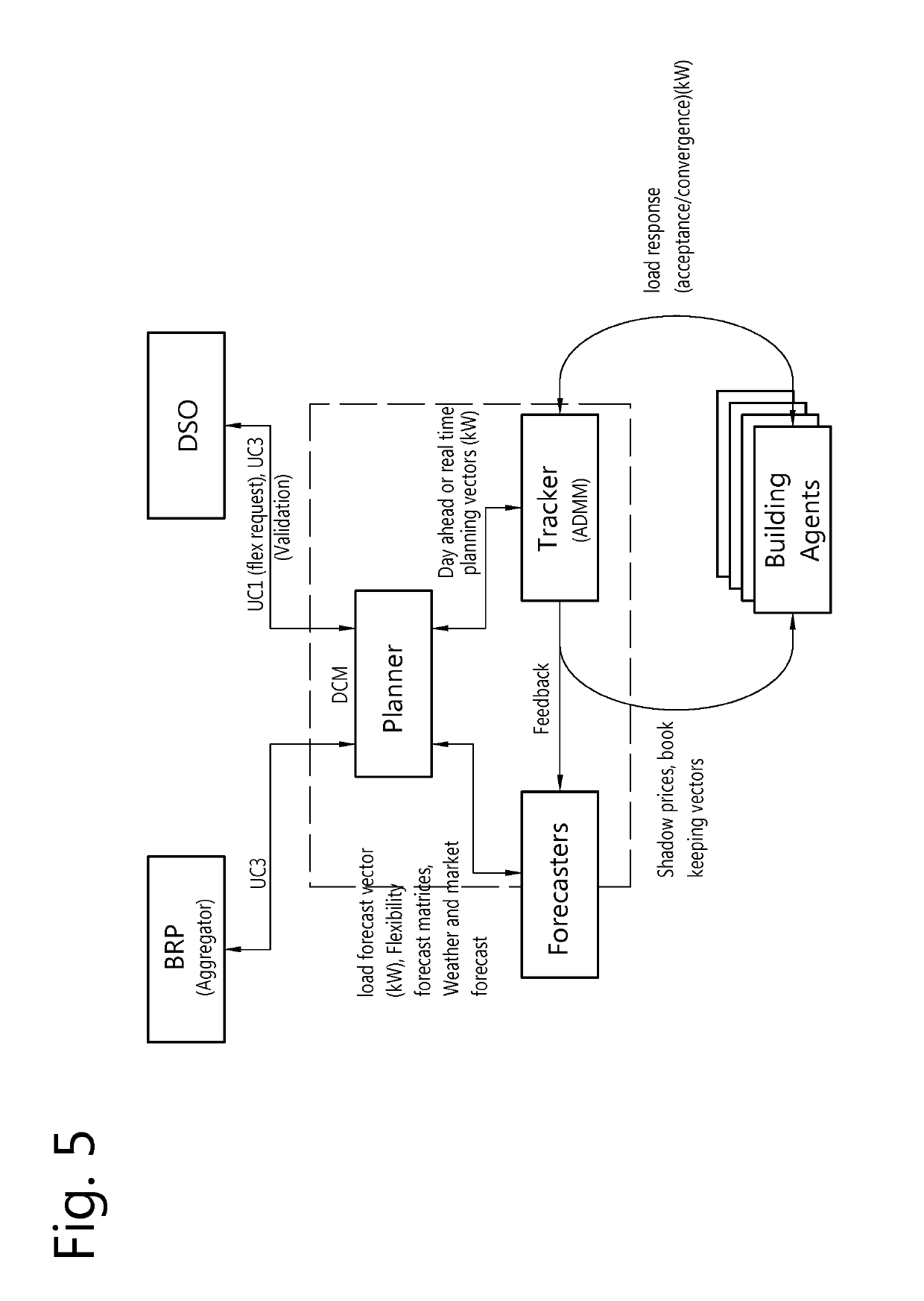Hierarchical implicit controller for shielded system in a grid
a shielded system and controller technology, applied in adaptive control, program control, instruments, etc., can solve the problems of many systems and clusters of systems that cannot be steered, many systems cannot be steered, and some control parameters cannot be steered, so as to achieve the effect of minimizing local res curtailmen
- Summary
- Abstract
- Description
- Claims
- Application Information
AI Technical Summary
Benefits of technology
Problems solved by technology
Method used
Image
Examples
embodiment 1
ems
[0090]The present embodiment relates to heating or cooling networks providing heating or cooling to a building or a group of buildings. Each of these buildings or group of buildings is controlled by its own, private, BMS. This BMS ensures that the temperatures inside the building remain in well-defined ranges, that return temperature are optimized, so that heat pumps work well, that pressure on the pipes is monitored and that no water is circulated if pressure drops indicate leaks. In many cases, there is no access to the BMS system itself by third parties, so that direct steering of the use of heating or cooling and / or power consumption of the building is not possible. In many cases of heating and / or cooling of buildings, one of the external parameters that is used by a BMS is the external temperature. For example for a heating network, if the outside temperature drops, buildings will consume more heat and vice versa. In other cases, indoor temperature measurements are used by t...
embodiment 2
lants
[0097]Many industrial plants are organized in order to steer flows of goods and people. This optimization is often complex and is performed by a management team and / or by computers. One of the inputs to steer such complex processes is the availability of electricity and the constitution of the electric grid. It is expected that the availability of electricity will become more volatile in the future, due to a larger penetration of renewable energy sources. As a result, industrial plants will not only take the electricity prices into account in their decision processes but also the availability of electricity. It will become more beneficial for the industrial plant, the distribution grid and the transmission grid operator to control electric energy use more carefully.
[0098]Load synchronization may harm the distribution grid. When a lot of flexible sinks are connected to the same grid, they will all try to maximize their consumption. Most grids cannot cope with this, since it is a...
embodiment 3
d Hierarchical Applications on Industrial Sites
[0101]Embodiments of the present invention can be applied recursively to industrial plants and their sub-units down to the level of individual devices if necessary. Embodiments of the present invention also allow for multiple industrial sites (e.g. in the same region) to be optimized together in a hierarchical fashion—See FIG. 2. The embodiment of FIG. 2 shows industrial site / connection of sites 10 having three controller levels: controller level No. 1, controller level No. 2 and controller level No. 3. These can be retrofitted controller levels. Each system, such as systems 21, 22, 31, 32, has an accessible external variable 23, 24, 33, 34 which can be manipulated such as the value of an external temperature sensor. Each retrofitted controller level 1, 2 also has an accessible external variable 13, 25 which can be manipulated such as the value of an external temperature sensor, in accordance with an embodiment of the present invention....
PUM
 Login to View More
Login to View More Abstract
Description
Claims
Application Information
 Login to View More
Login to View More - R&D
- Intellectual Property
- Life Sciences
- Materials
- Tech Scout
- Unparalleled Data Quality
- Higher Quality Content
- 60% Fewer Hallucinations
Browse by: Latest US Patents, China's latest patents, Technical Efficacy Thesaurus, Application Domain, Technology Topic, Popular Technical Reports.
© 2025 PatSnap. All rights reserved.Legal|Privacy policy|Modern Slavery Act Transparency Statement|Sitemap|About US| Contact US: help@patsnap.com



